Many people want to know about dating vintage and antique brooches, and how they can tell if a brooch is old. As with anything to do with jewellery, things can get complex pretty quick, but here are 5 simple beginner’s tips for dating vintage brooches – please note these are general guides only for people new to the vintage jewellery world, and not an in depth guide.
- If you see a brooch, the first thing to do is to check out its clasp mechanisms. The ‘T-bar hinge and c-clasp’ types (see photos below) were generally used from the 19th Century up until the around 1920s. Some modern artisans still prefer to use a c-clasp – but on modern brooches you’ll probably never see a T-bar hinge.
- Check the length of the pin itself – generally speaking, the longer the pin, the older the brooch (this was perhaps due to clothing being much thicker and heavier in the old days, so a long pin was needed to keep it in place securely).
- From around the 1910s to 1930s we occasionally see what we call in the trade ‘trombone’ clasps, which are tubular cylinders used to keep the pin itself in place rather than a c-clasp (though c-clasps were still common in this period too). This is general age dating only, and trombones can occasionally be seen on pre-1910s jewellery up to modern times in my personal experience, so other factors in dating the brooch should be explored (eg, length of pin, does it have a T-bar hinge etc).
- Generally speaking you tend to only find the roll-over clasps on brooches made from around the 1960s onward. (Note: Early experimental prototype roll-over ‘safety’ clasps can be seen as early as the 1900s, though these are uncommon – I’ve only ever seen a small handful made before the 1940s in the last 10 years).
- There are no hard and fast rules to dating a brooch – things other than a pin and clasp must be taken into account, such as design, metal type, glass/ enamel/ stone cuts and types etc; the tips given here are general tips only for general guidance, and you may occasionally find a crude c-clasp on a piece of 1970s jewellery, or a long pin on 1990s jewellery (eg, so though I’ve personally never found the T-bar hinges on post 1930s jewellery, it’s doesn’t mean it won’t happen!).
Below, you can see some photo examples of the age and types of brooch clasps, starting from the earliest. Remember, the key words here are **general speaking** and not hard rules (there are c-clasps you may find on modern jewellery, and rollover clasps you may find on very early 20th Century jewellery):
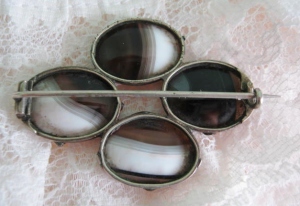

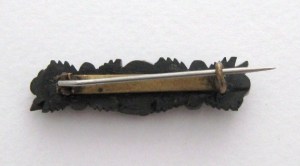
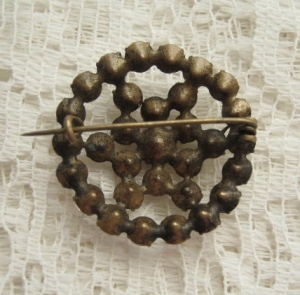
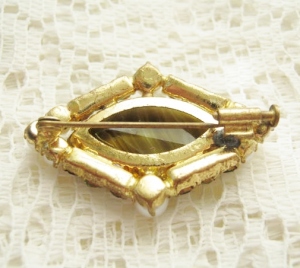
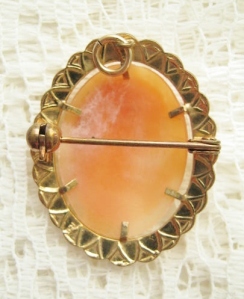

Finally, the most important tip when learning to date vintage jewellery is to handle as many pieces as possible. Go to auctions, antique fairs and proper vintage shops and have a really good look at what genuine vintage jewellery looks and feels like. And remember – as pointed out previously, these are general guidelines only – you may find occasionally find c-clasps on modern brooches, and early types of roll-overs on pre-1950s jewellery. Get advise and guidance from as many different people and sources as possible.
Enjoyed the info together with the pictures. I love old jewelry and would love to be able to date it better than just saying. “this is an old piece”. Thanks for sharing your knowledge.
I have 2 cameos ,where can I find pictures or photos of cameos I would love to try to find out how old they are.
Hi!
If you do a search for micro mosaics on websites like eBay, Etsy, 1st Dibs and Ruby Lane, you may find similar items to yours that can hopefully give helpful info.
Kind regards, Nic
Hi Nic. I enjoyed your article. I kept noticing how you were spelling jewelry(jewellery). I had to look it up to see if there was two variations of the spelling. Honestly at first I thought you mistyped accidentally but when I kept seeing it the same as I read, I decided to do some research and well let’s just say I learned something new today about jewellery😉 from your article that you were not even attempting to inform anyone about. I did enjoy your article though. It was helpful and informative. I really like how you added pictures also to help show and help people understand what the different types of latches look like. Thanks for all the new information I learned today. 😁
I sure wish the brooch ‘clasp’ pictures were available 😦
Oh no – I see what you mean, all my brooch pictures have totally disappeared?! :O 😦
No idea why this has happened, many thanks Eileen for notifying me about it – I’ll sort this out ASAP.